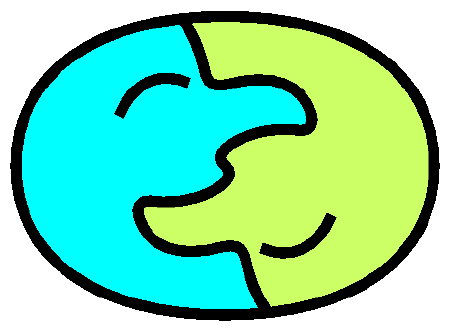Tom Veatch
Flames of inspiration often leave smoke signals behind.From mine, these.
| Foundations of Future AI | Towards a New Cognitive Science |
| Human Evolution | Logic constrains biology, biology constrains us, and yet we think and speak and feel. How did we get here, then, and what parts came in what order? This was a lot of fun to write. Includes Tautology, and Cognitive Biology, and Conceptual Archeology. |
| N+V Humor Theory | Veatch's 1998 "A Theory of Humor" |
| Gesture Learning | How to learn effective physical movement. A research program for reinforcement learning by embodied systems, like people. |
| Math as Language | Underlying intuition reads out as discrete expression. |
| Robot Emotion | On the design of emotional systems for humans and robots. Motivational frames and their relative priorities. Metrics to guide reinforcement learning. |
| Evolutionary/Functional/Logical Decomposition | of the elements of Language |
| Synthetic Perception | Examples include image merger, color qualia, rhythm, object coherence, and stereoscopic movement as object learning. |
| Neural Networks + Fuzzy Logic + Space | An attempt at a careful, accessible introduction to neural networks
assuming only high school algebra and a little geometry and
differentiation. NNs are defined mathematically, along with how to
run them, how to train them (by the usual gradient descent), how
to train them better (so I suppose: using 'Newton-Raphson', which
really ought to kill!). I also discuss how to understand the
training algorithm's implicit reasoning about the adjustments it
decides to make; I share an interpretation that backpropagation is
like an Anti-Dunning-Kruger learning system (and therefore morally
superior to most men?). Then I give a whole Fuzzy Logic
re-interpretation of NNs, along with suggestions on how to enhance
their logical reasoning capabilities. I tried the wikipedia page,
and got so frustrated I wrote my own introduction. So yes, I
suggest reading this if you want to really understand neural
networks, and if your other resources have made it seem
inscrutable. It's a few pages of actual math, yes, but all the
steps are laid out: no leaps! It's not short, but you don't have to be
a math major to follow along. I encourage your
study here if you are interested in really knowing how neural
nets work. Also this adds Fuzzy Logic to neural networks, including how to train them. Finally this goes into Space Representing Neural Networks so robots can represent space, or humans' representation of space can be understood better. Three months of work is in here. |
| RSS for updates |
|
